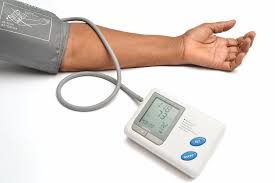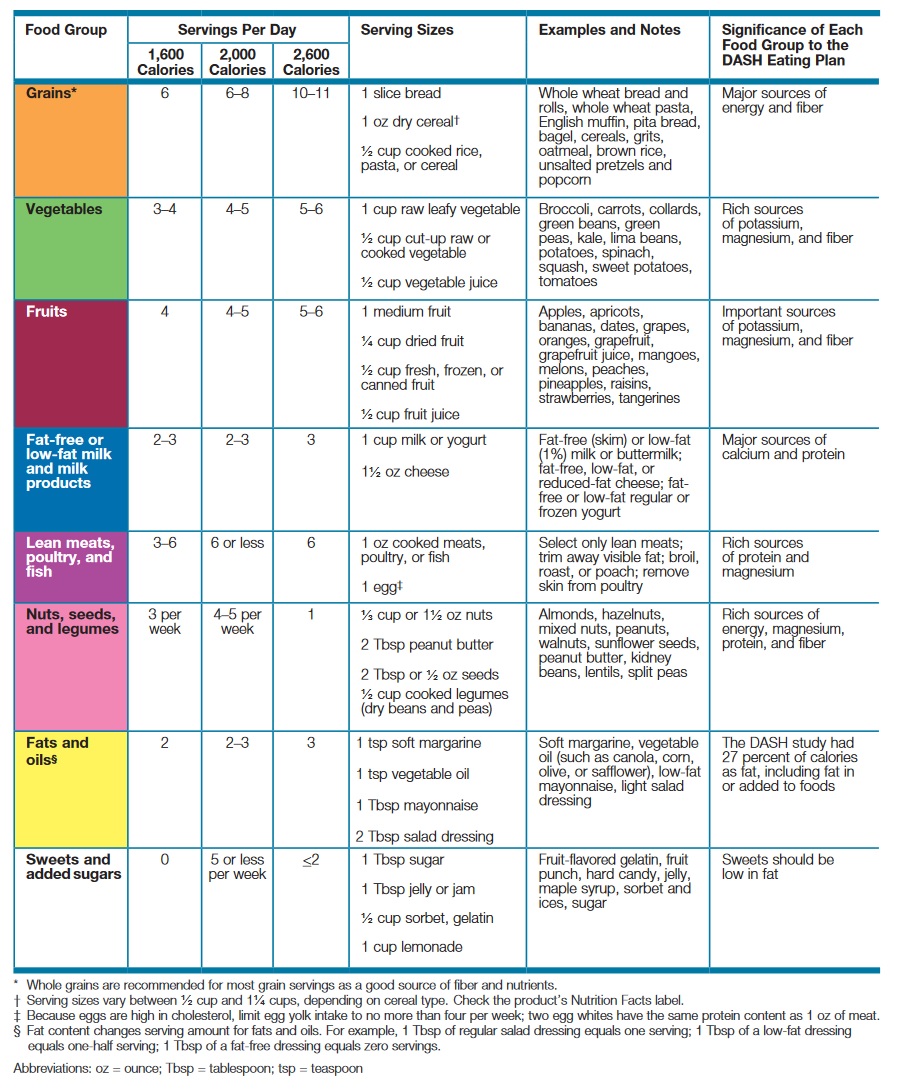Posts Tagged ‘DASH Diet’
Lifestyle Changes for Hypertension. By Our Student Pharmacist, Dennis Zhang.
- Reduce the salt in your diet slowly. Aim for 2.3 grams of sodium every day first, then gradually decrease to 1.5 gram every day.
- Adding other flavors to your dishes. There are seasonings that are specific for restricting daily sodium intake. One brand I recommend is Mrs. DASH. It has a variety of salt-free flavors you can choose from.
- Read food labels. Some packaged food contains more sodium than you think.
- Switch from processed food to fresh vegetables and meats. Many pre-processed foods contain too much sodium to increase their taste.
- Lots of fruits, vegetables, and whole grains
- Some beans, peas, lentils, chickpeas, and similar foods
- Some nuts, such as walnuts, almonds, and peanuts
- Fat-free or low-fat milk and milk products
- Some fish
2. Mayo Clinic (2021, Feburary 24). 10 Drug-Free Ways to Control High Blood Pressure. Mayo Foundation for Medical Education and Research. mayoclinic.org/diseases-conditions/high-blood-pressure/in-depth/high-blood-pressure/art-20046974
The DASH Diet. By Our Student Pharmacist, Sam Berens.
We are now about two weeks into the new year and many of us are looking for a good New Year’s resolution to start the year off right. After this crazy year, I think a lot of adults are looking to get back to a healthier lifestyle. With around half of the adult population struggling with hypertension, this blog post could apply to a large portion of the community.
This post is designed to help provide tips for health benefits to your heart and overall wellbeing, while also giving you the opportunity to lose some weight.
It has been proven through research that by following the Dietary Approaches to Stop Hypertension (DASH) diet, high blood pressure can be prevented and lowered, which has numerous health benefits. This eating plan considers your age, gender, and activity levels to give you a daily calorie goal. The DASH diet does not require any special foods or hard-to-follow recipes, which makes it easy to follow.
To find out the calories you should have each day, we need to determine your activity level.
Identify your physical activity level:
- Sedentary – typically light physical activity that is a part of your day-to-day routine
- Moderately active – physical activity equal to walking about 1 to 3 miles a day at 3 to 4 mph, plus light physical activity
- Active – physical activity equal to walking more than 3 miles a day at 3 to 4 mph, plus light physical activity
The calorie level that you fall into will help tell you how many servings of each food group to eat each day. Choose the calorie goal that most closely matches your recommended daily calories on the DASH eating plan included here to see what is recommended that you eat each day.
One of the most important criteria for the DASH diet is limiting the daily sodium intake to 2,300 (about 1 teaspoon), which can be difficult due to all the processed foods that we are regularly provided. To help reach this, aim for foods that contain 5% or less of the recommended daily value of sodium and try to avoid canned and frozen foods, which contain higher amounts of sodium.
It can be difficult to change up your entire diet, so here are a few recommended suggestions to help you start the DASH diet:
- Begin adding a serving of vegetables at lunch or dinner one day and add in fruit as a snack or during a meal.
- Start buying only fat-free or low-fat milk products.
- Include at least two vegetarian meals each week.
- Limit lean meats to 6 ounces a day.
- Begin increasing daily servings of vegetables, brown rice, whole wheat pasta and cooked dry beans.
- Eat fruits or foods low in saturated fat, trans fat, cholesterol, sodium, sugar and calories for snacks and desserts.
- Use fresh, frozen or low sodium canned vegetables and fruits.
The DASH diet can help you prevent and control high blood pressure and help you lose weight. Start today and live a healthier life!
Reference: https://www.nhlbi.nih.gov/files/docs/public/heart/dash_brief.pdf
The DASH Diet. By Our January Student Pharmacist, Brayson Ramirez.
At this point, we are a little bit more than a week into 2019. Many people have made New Year’s resolutions and a large chunk of them most likely want to lose some unwanted weight. Weight loss is not a bad idea, but a lot of people do not know how to do it in a healthy way. Some believe eating less is the way to lose weight, but that can be unhealthy and even dangerous.
The best way to lose weight is through diet and exercise, but also keeping in mind what is reasonable and what one is individually capable of doing. Some progress is better than no progress. Some diet changes may show change, but some may just lead to a happier, healthier life.
I recommend focusing on the happier, healthier life and the rest will come with time.
The first place to start a dietary change would be with the DASH diet. This diet has been proven through multiple scientific studies to help lower or prevent high blood pressure and can also help with weight loss and diabetes. The focus of this diet is on foods that have always been considered healthy, such as fruits, vegetables, fish, poultry, and nuts. The DASH diet also tries to keep sodium, sweets, added sugars, and fats in moderation. By adjusting the serving sizes of each group, more nutrients can be ingested while limiting the harmful saturated fats, trans fats, and cholesterol.
To figure out your diet, all you do is check your daily calorie needs for your age and level of activity. Age, is of course self-explanatory, but activity level can be tricky. The DASH diet divides activity level into sedentary, moderately active, and active. Sedentary is only completing your activities to get through the day. Moderately active is walking 1-3 miles a day at a low speed. Active is considered walking more than 3 miles per day and some light physical activity. Females have lower calorie needs on average, as seen in this chart provided by the National Heart, Lung, and Blood Institute (NHLBI).
Making this change in diet too quickly can lead to some diarrhea and other uncomfortable problems due to the increase in fiber. Slowly adding a serving or two of vegetables, grains, or fruits each week to transition to the DASH diet can help limit digestive issues and make the change as comfortable as possible.
The hardest part to follow in the DASH diet is knowing the servings needed of each group and what counts as a serving. This is where the diet gets tricky. The NHLBI has a great chart that breaks everything down as shown here.
My advice on this concept is to check out the food groups listed and just try to stay around the top. Maybe try a couple of the meal ideas pre-made on the site or create your own with the recommended food groups. See if there are any meals you enjoy; if you do, start introducing one or two of them every week.
Hopefully, you could get to the point of an all DASH diet approved meal plan, but if you are at least choosing the healthier of two options then that is some important progress. Remember, some progress is better than none and if you are living a happier, healthier life that is most important.
For all my reference material and more information on the DASH diet. And for various resources to use in any dietary adjustments please visit https://www.nhlbi.nih.gov/files/docs/public/heart/dash_brief.pdf











